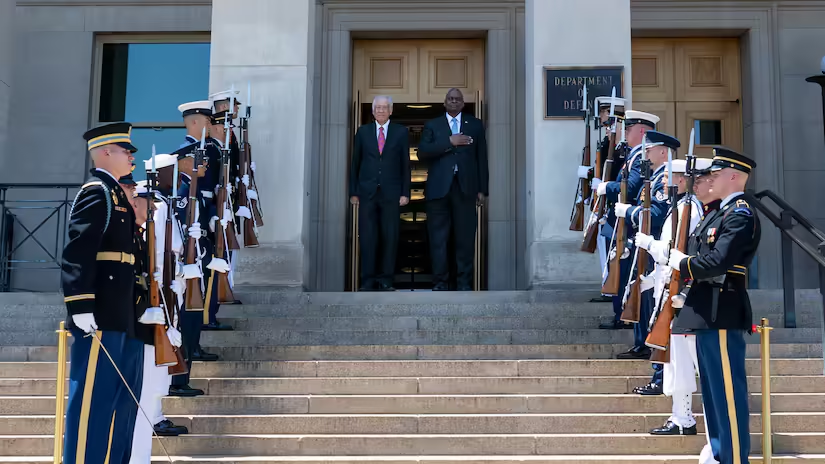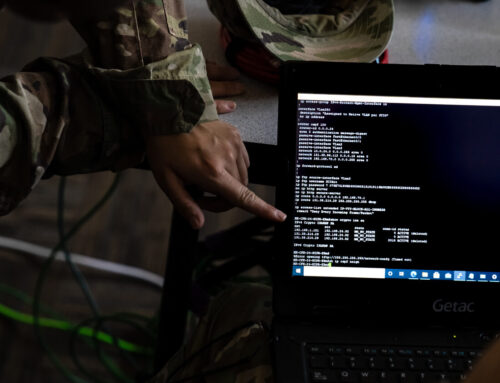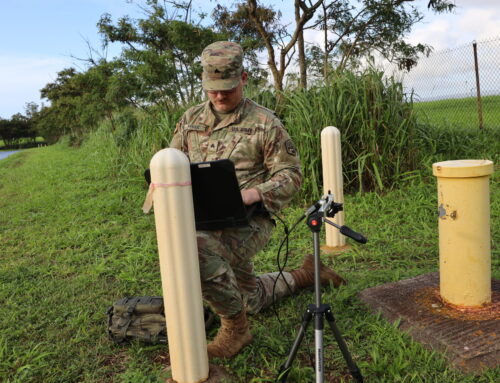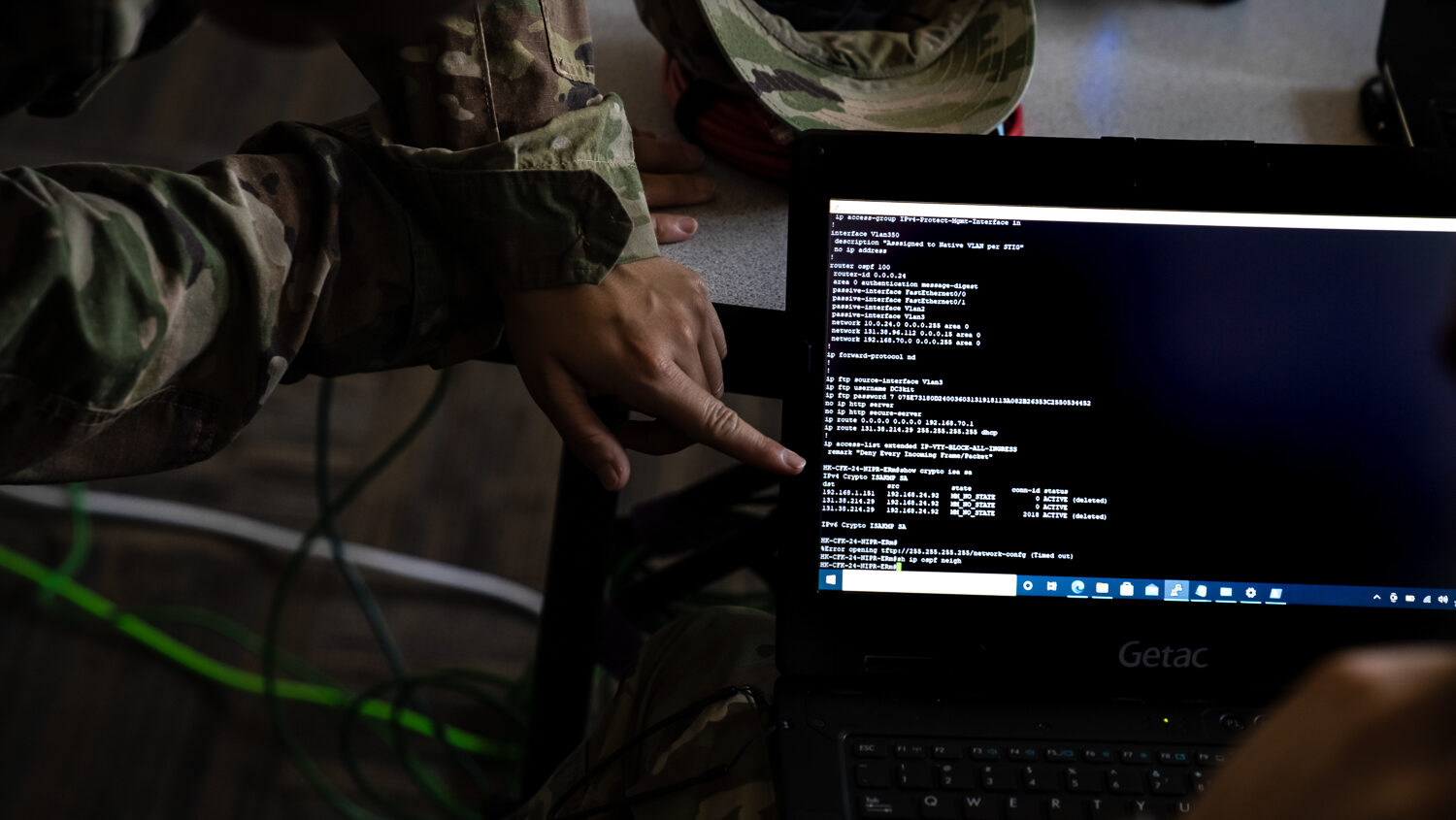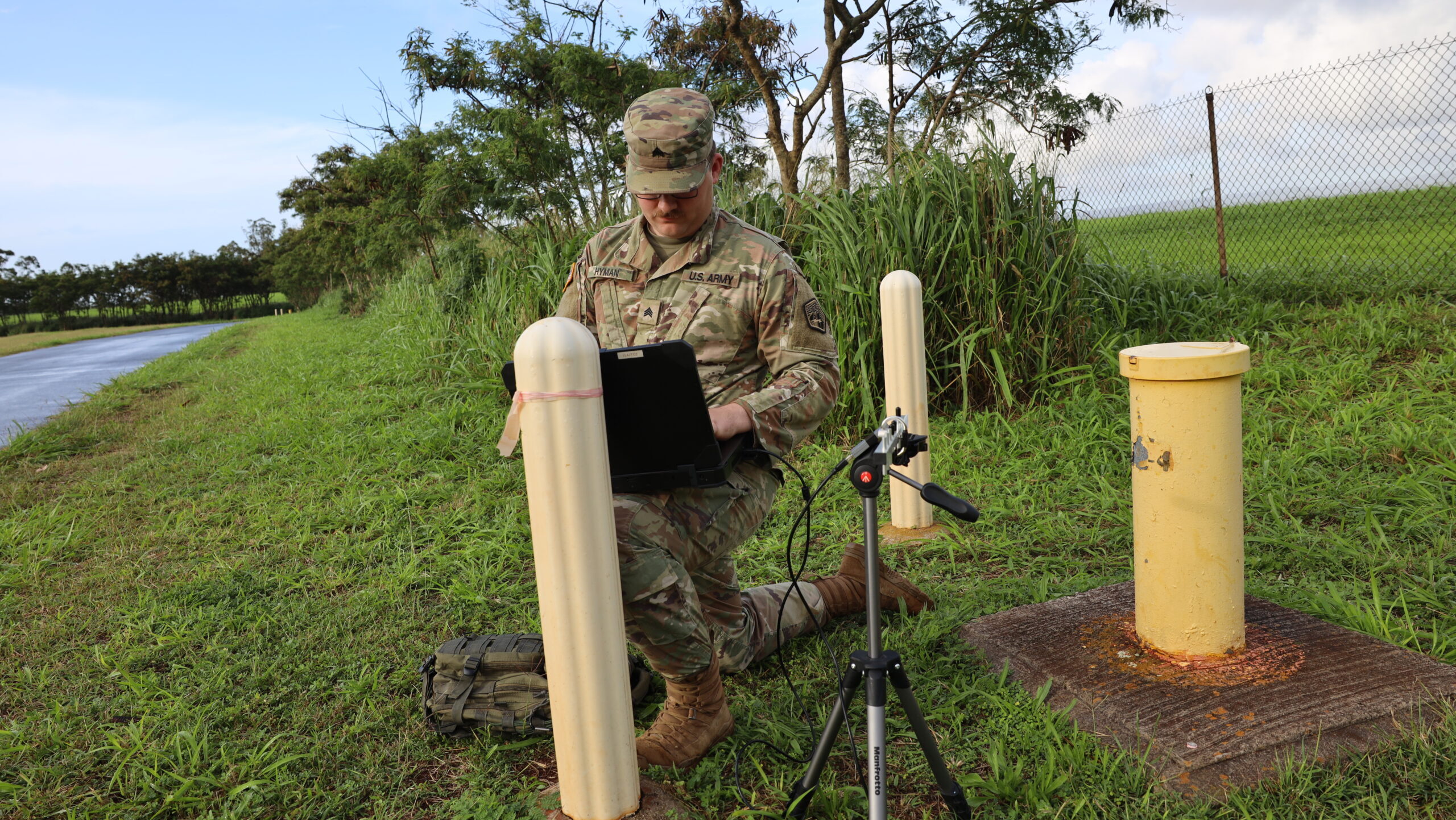Singaporean Defense Minister Ng Eng Hen and and Lloyd Austin, US defense secretary, at the Pentagon. (DoD)
SYDNEY — Singapore, one of the world’s smaller countries but one of its most vigorous investors in artificial intelligence, has signed an agreement with the United States military to boost their AI efforts.
“Artificial intelligence is becoming increasingly vital in helping militaries secure a competitive edge in today’s digital battlefield,” Singapore’s Defense Minister Ng Eng Hen said during a visit to Washington. “I am glad both Singapore and the US are working closely together to accelerate and scale AI adoption in military applications.”
The data sharing between the US and Singapore could provide significant information about international shipping to better understand what’s happening in the region’s waterways, among other variables, said Bryan Clark, an expert on autonomous systems and navies at the Hudson Institute in Washington. “I think this could be important because the government of Singapore has a substantial research organization and probably has a valuable data set. It can gather a large amount of data on shipping flows, vessel movements, etc. in their region that could help train US AI models on South China Sea activity to help better understand what normal looks like and what could signify an anomaly.”
Radha Plumb, the Pentagon’s chief digital and artificial intelligence officer, noted that Singapore is “a key technology innovator in the Asia-Pacific region.”
RELATED: GIDE goes wide: Defense AI chief seeks host of industry players for global battle network
Singapore boasts an extremely strong AI sector, especially for its size. The city-state has a population of 5 million.
“As a percentage of GDP, Singapore’s government-supported AI R&D spending is 18 times larger than similar U.S. R&D spending,” says a report on Singapore’s AI from the Center for Security and Emerging Technology at Georgetown University. “Singapore’s ecosystem of accelerators, incubators, and over 3,600 tech startups ranks it as one of the world’s most developed startup environments, bolstered by strong foreign investments and international collaboration, including in the form of research partnerships.”
The agreement with the US, however, comes hard on the heels of one Singapore signed on June 27 with the Peoples Republic of China on civilian artificial intelligence, pledging to create standards to better share data and create laws, rules and policies to guide the development of AI. The two countries agreed “to promote common baseline standards to facilitate the cross-border flow of data, and to exchange knowledge on cross-border data sharing mechanisms.” In the longer run, they plan to try and create new industries.
Very few details about the agreement between Singapore and China have been released, beyond the fact it is apparently focused on the civilian sector. However, China has a long history of gathering huge amounts of data that is not directly defense-related, presumably to help train its AIs and increase the accuracy of its intelligence estimates.
“The agreement [with the US] is a next step in Singapore-US security cooperation, and supports the relationship in addressing an evolving issue of common concern. Singapore, however, will have to somehow deconflict cooperation with the United States with the digital and cyber cooperation programs it also has with the PRC,” said Ian Chong, associate professor at the National University of Singapore, an expert on the Chinese military.


